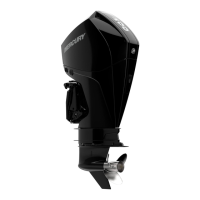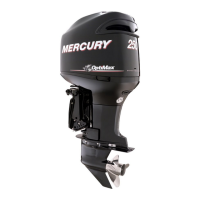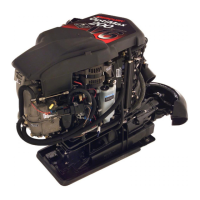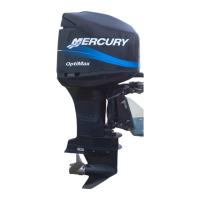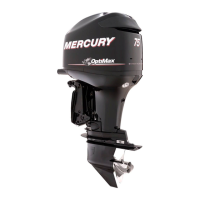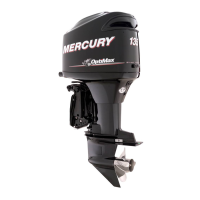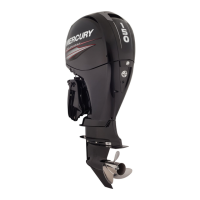INSTALLATION
Page 1D-6 90-888438 JUNE 2002
3. On installations requiring long lines or numerous fittings, larger size lines should be
used.
4. Fuel line should be installed free of stress and firmly secured to prevent vibration and/or
chafing.
5. Sharp bends in fuel line should be avoided.
6. A flexible fuel line must be used to connect fuel line to engine fuel pump to absorb deflec-
tion when engine is running.
7. A primer bulb is not necessary with this application. If a primer bulb is used, it must be
U.S. Coast Guard approved for inboard engine installations.
8. Vapor separator must be vented to fuel tank. Vent hose must comply with U.S. Coast
Guard/ABYC regulations.
Instrumentation
CAUTION
If a fused accessory panel is to be used, it is recommended that a separate circuit
(properly fused) be used from the battery to the fuse panel with sufficient wire size
to handle the intended current load.
NOTE: Check the charging capability of the engine. The electrical load of the boat should
not exceed this capacity.
We recommend the use of Quicksilver Instrumentation and Wiring Harness(es). Refer to
“Quicksilver Accessories Guide” for selection.
If other than Quicksilver electrical accessories are to be used, it is good practice to use
waterproof ignition components (ignition switch, lanyard stop switch, etc.). A typical jet boat
of this nature will see water splashed on these components. Therefore, precautions must
be taken to avoid ignition failure due to shorting out of ignition components.
WARNING
Sudden stopping of engine (shorting ignition components) while boat is underway
will cause loss of steering control due to loss of thrust. This loss of steering control
may cause property damage, personal injury or death.
A warning horn must be incorporated in the wiring harness (see wiring diagram) to alert the
user of an overheat, low oil condition or oil pump failure.
IMPORTANT: If a warning horn system is not installed by the boat manufacturer, Mer-
cury Marine will not honor any warranty claims for engine damage as a result of over-
heating or lack of engine oil.
Route instrumentation wiring harness back to engine, making sure that harness does not
rub or get pinched. If an extension harness is required, be sure to secure connection proper-
ly. Fasten harness(es) to boat at least every 18 in. (460 mm), using appropriate fasteners.
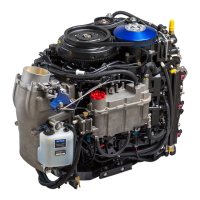
